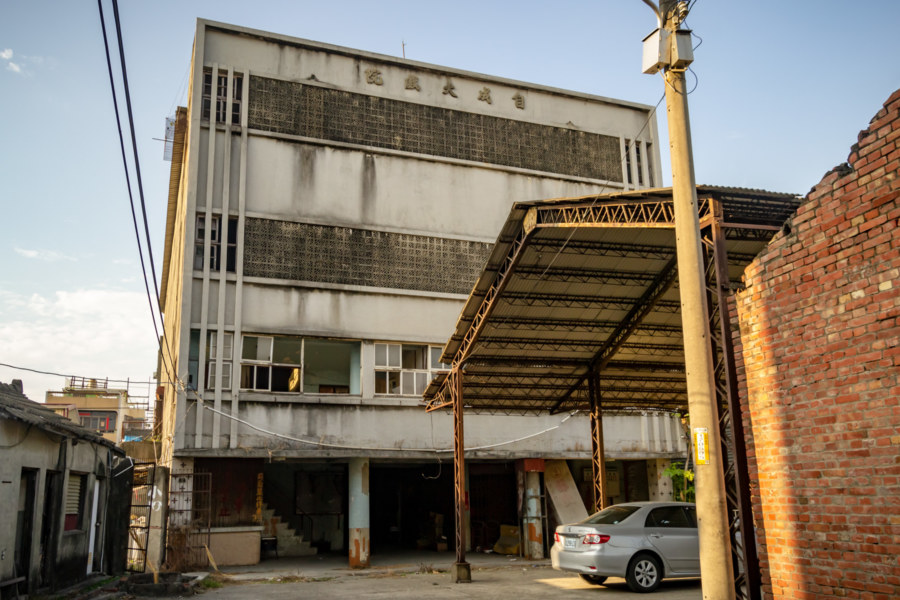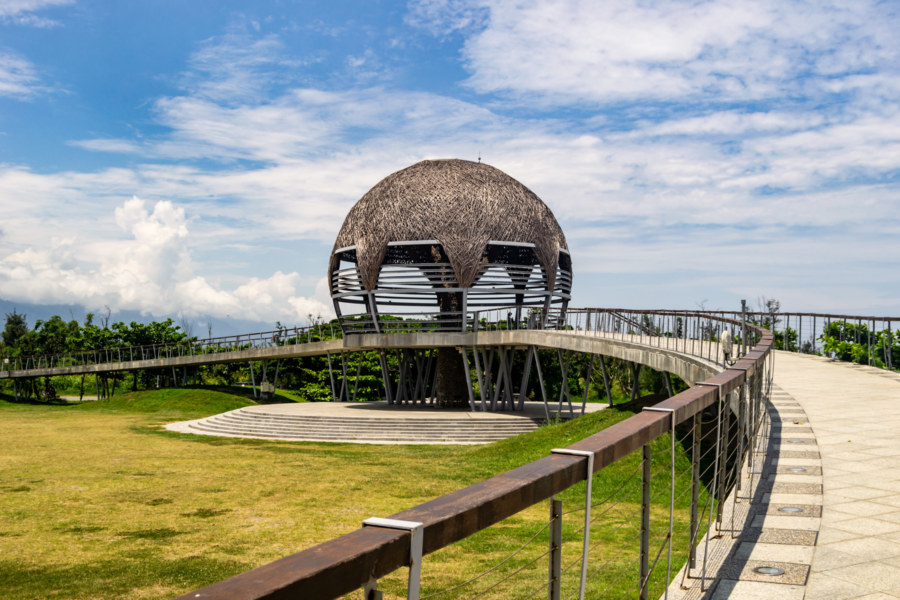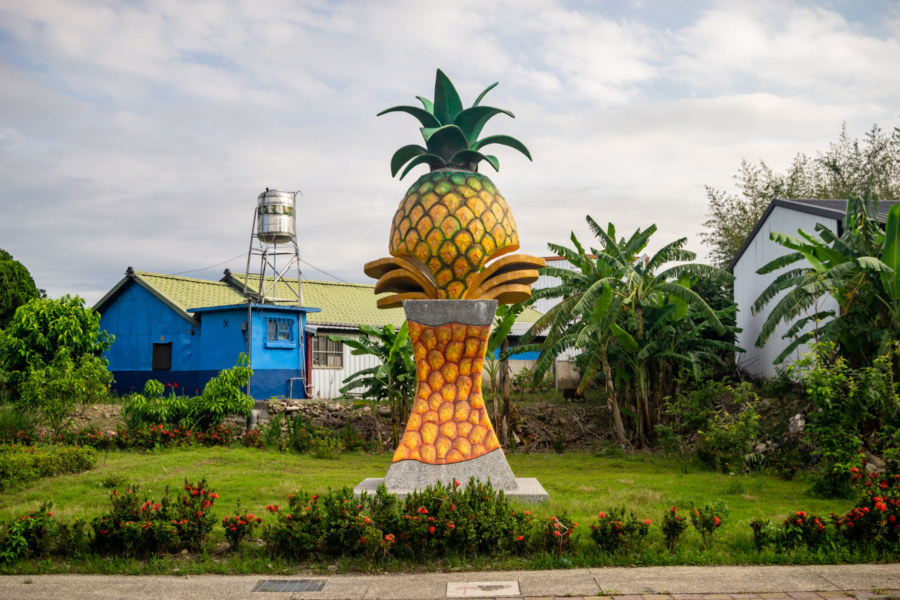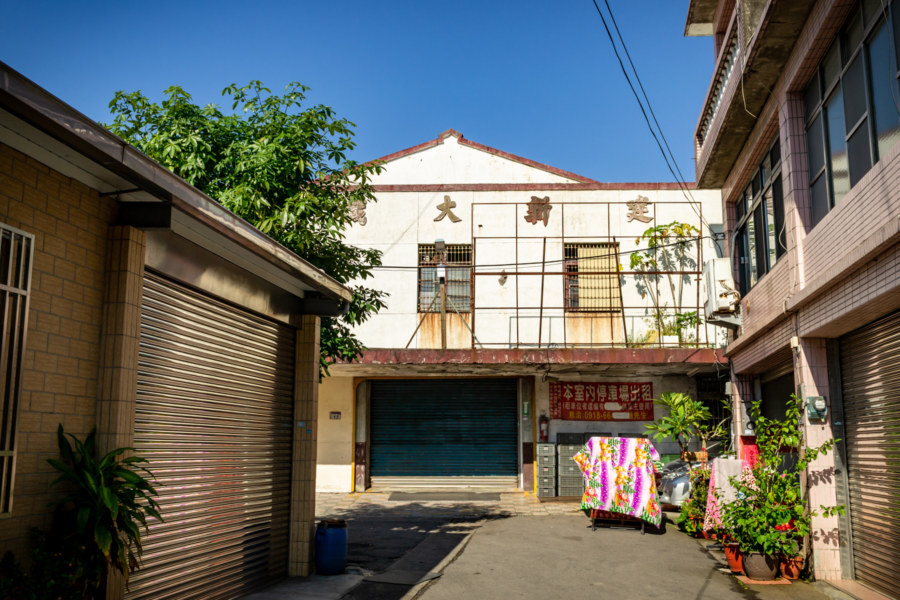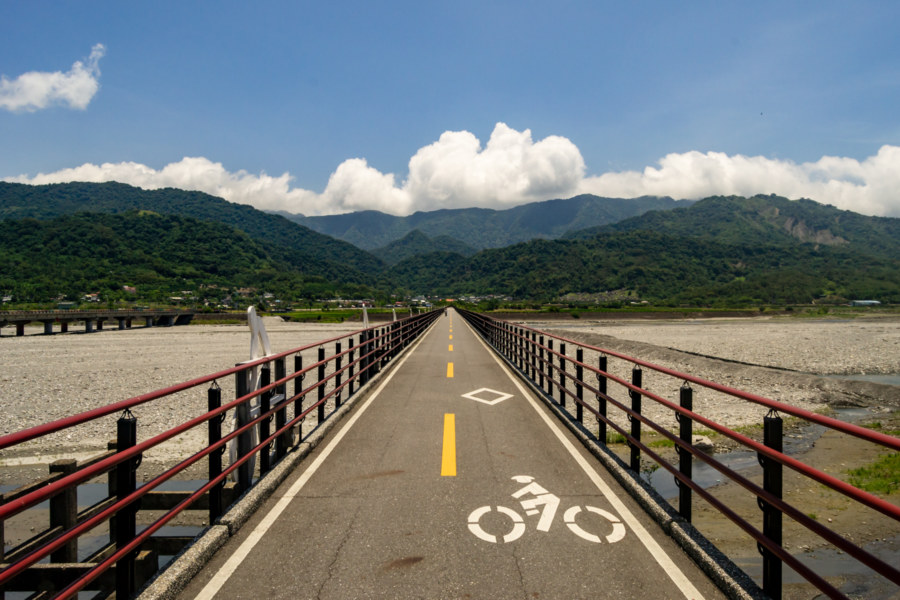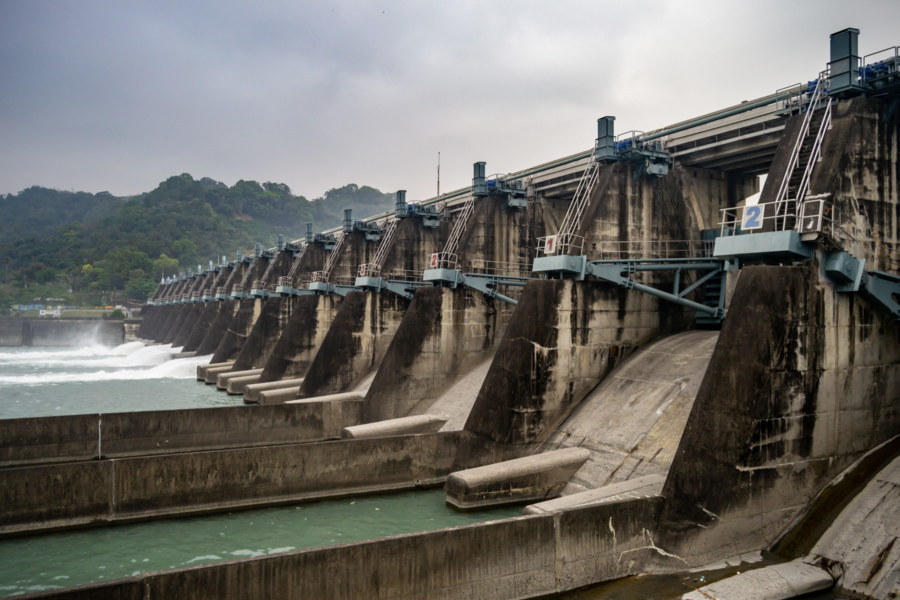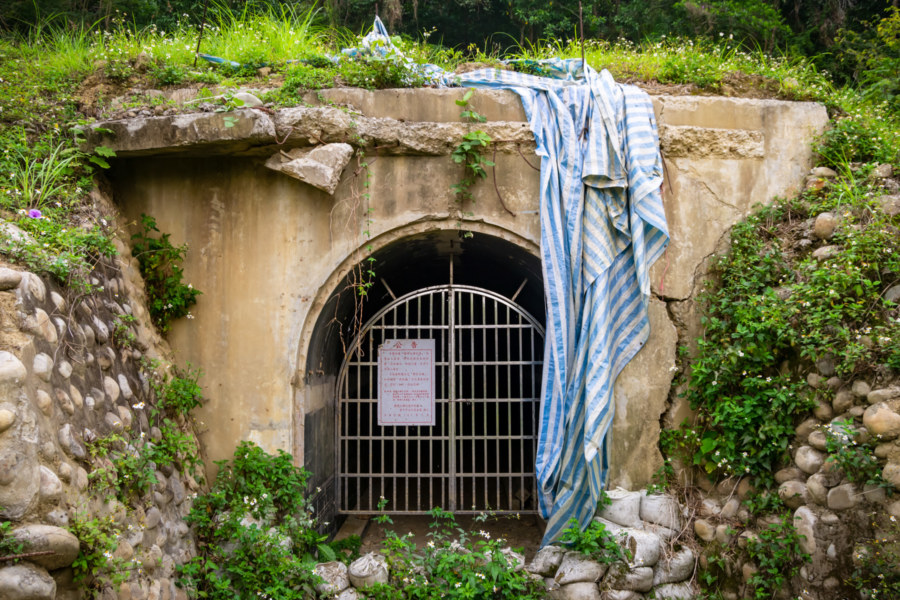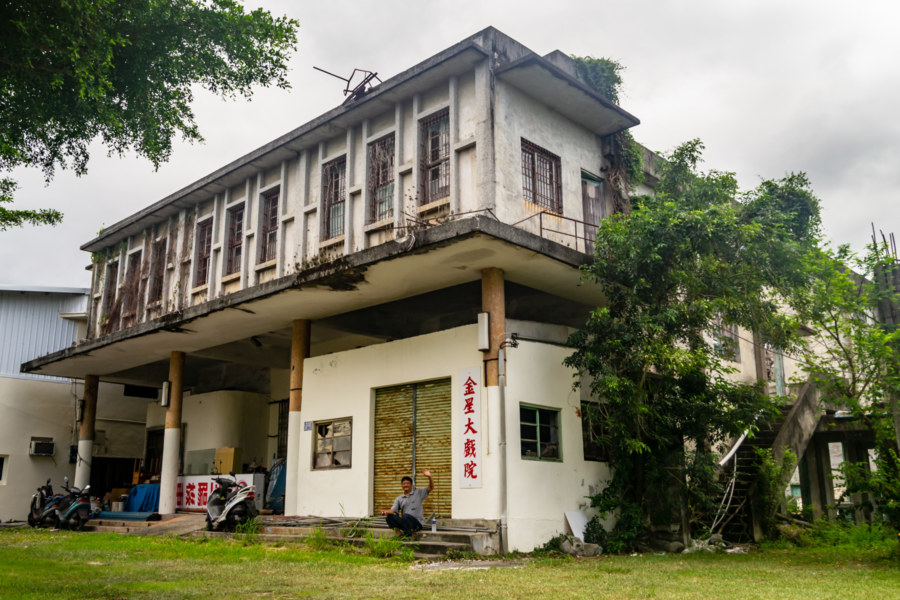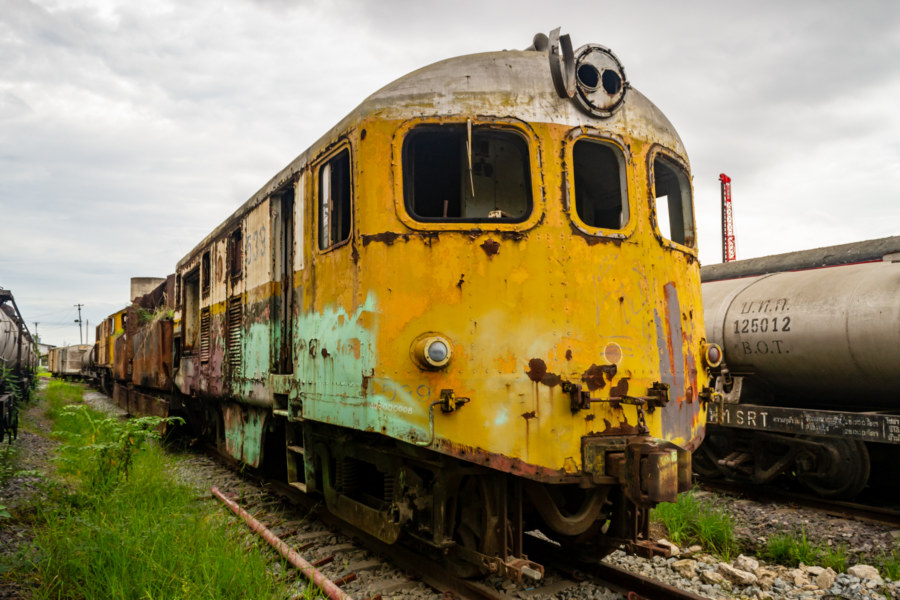Zìchéng Theater (自成大戲院) is a derelict cinema located in Baozhong, a rural township on the coastal plains of Yunlin, Taiwan. After opening in 1966 this theater drew enormous crowds from the surrounding districts, particularly in its early years of operation, when it was customary for movie stars to appear on stage to promote new films. Business began to decline with the closure of the nearby sugar factory and the widespread adoption of home television in the late 1970s, ultimately leading to the final screening sometime around 1985. Since then the theater has remained idle, slowly decaying with the passage of years, its fading fortunes mirroring those of the surrounding settlement.
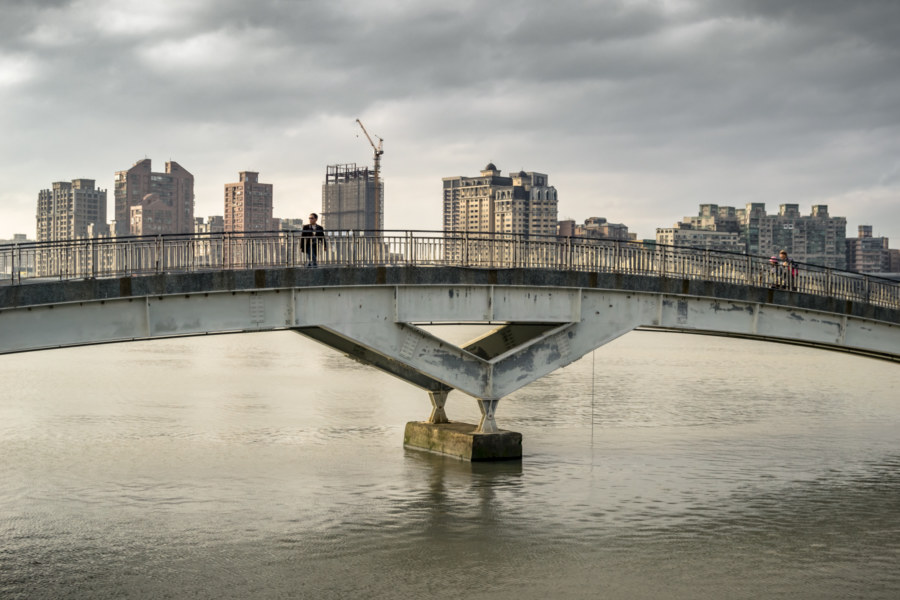
Exploring the urban condition: the buildings that tower over all, the rhythm of the streets, and the fleeting moments of humanity in the midst of the concrete jungle. See also: urbex.
Subterms
Adjacent Terms
Huadong Valley Ride 2018: Taitung City
This entry documents my final day of riding on a bicycle trip down the Huadong Valley in 2018. I began with a short yet eventful spin around Taitung City, the administrative capital of Taitung, and headed southwest across the alluvial plains before curving back to catch a train bound for Taipei in the afternoon. I already introduced the history, geography, and culture of Taitung City in this post from a previous visit in 2015, so I’ll focus on specific sites I visited on this particular trip.
Huadong Valley Ride 2018: Guanshan to Taitung City
My fifth day of riding the Huadong Valley in 2018 began in Guanshan and ended in Taitung City, approximately 45 kilometers further south. Although there were several uphill segments this was one of the least demanding rides of the entire trip, partly because I had a good night’s rest, but also due to some cloud cover moderating the influence of the tropical sun. After rising I cycled over to Little Star Breakfast shop (小星星早餐店) to try their fluffy handmade dànbǐng 蛋餅 (a crepe-like egg roll with various fillings). Feeling recharged, I set out to catalog more of eastern Taiwan’s historical relics and natural wonders.
Daxi Jianxin Theater 大溪建新大戲院
Jiànxīn Theater (建新大戲院) is located in Yuánshùlín (員樹林), a suburban area on the western outskirts of Daxi in Taoyuan, Taiwan. Business records indicate an inception date of 1977, but not much is known about this theater apart from that. The last recorded transaction in 2000 sets an upper bound on when it was operating, but likely went out of business in the early 1990s, when most of the rest of Taiwan’s cinema industry collapsed. It now enjoys a second life as a parking garage for the nearby factories and residences.
Huadong Valley Ride 2018: Yuli to Guanshan
Day four of riding through the Huadong Valley of eastern Taiwan in 2018 began in Yuli, the midpoint of this bicycle trip from Hualien City to Taitung City. From the weather report I knew I’d have another challenging ride ahead—yet again the mercury was due to exceed 35 degrees. Luckily I was in no great rush, as I had allocated an entire week for a trip that experienced riders could easily manage in two days. I made good use of that extra time, making numerous stops and detours to document some of the many historic and cultural sites along the way, many of them quite obscure. I ended the day in Guanshan, slightly more than 40 kilometers down the valley.
Shigang Dam 石岡水壩
Shigang Dam 石岡水壩 is a barrage dam on the lower reaches of the Dàjiǎ River 大甲溪 in Shigang, Taichung, Taiwan. It was constructed between 1974 and 1977, not long after the completion of the Techi Dam 德基水壩, a far more ambitious hydroelectric project further upstream. Intended mainly for flood control and irrigation purposes, it was heavily damaged in the devastating 921 Earthquake of 1999 and later repaired. Despite its diminished capacity, Shigang Dam continues to serve an important function in regional water distribution across Taichung.
Yuli Shinto Shrine 玉里神社
Yuli Shinto Shrine 玉里神社 is a Japanese colonial era historic site in Yuli, the largest town in the middle of the Huādōng Valley 花東縱谷 of eastern Taiwan. Formally known as Yuli Shrine 玉里社 (Tamasato-sha in the original Japanese), it was constructed in 1928, the third year of the Shōwa era. The vast majority of Taiwan’s several hundred Shinto shrines were destroyed in the decades following the Japanese withdrawal—but enough of this shrine remained to justify its official designation as a cultural asset in 2008. Since then some effort has been undertaken to restore the site, which occupies a hilltop at the western edge of town, and it now ranks among the most well-preserved in the remote eastern part of the country.
Beigou Forbidden City Vault 北溝故宮文物典藏山洞
Beigou Forbidden City 北溝故宮 is an obscure historic site hidden in the hills of Wufeng, Taichung. From 1949 to 1965 it was the provisional base of operations for the team of archivists, curators, scholars, and technicians overseeing the subset of the Palace Museum collection sent for safekeeping to Taiwan by the Kuomintang (KMT) in the later stages of the Chinese Civil War. Nowadays this collection is managed and displayed by the National Palace Museum 國立故宮博物院 (or simply Gùgōng 故宮 for short), situated in Taipei, and almost nothing remains of the facilities in Wufeng. The one exception is an underground vault constructed in 1953.
Jinxing Theater 金星大戲院
Jīnxīng Theater 金星大戲院 is located in the small town of Zhīběn 知本 on the southern outskirts of Taitung City, Taitung, in southeastern Taiwan. Zhiben is home to the Katipul group 卡地布部落 of the Puyuma people 卑南族, one of Taiwan’s recognized Indigenous groups, but this theater was constructed in 1967 to cater to the many KMT veterans who settled here after the completion of the Central Cross-Island Highway 中部橫貫公路. Named after Venus (literally “Golden Star” in Chinese), it went out of business shortly after it was sold to a lumber company in 1980 and has been abandoned ever since.
Bang Sue Railway Cemetery
Bang Sue Railway Cemetery is located deep within a vast tract of land on the northwest side of Bangkok owned by the State Railway of Thailand. This land is home to Phahonyothin freight yard, the largest in Thailand, as well as numerous maintenance depots, engine shops, and other railway facilities. It is also the future site of Bang Sue Grand Station, set to be the largest railway station in Southeast Asia when construction is completed in the coming years. For decades the train cemetery hidden within these grounds has been known to urban explorers, so I decided to swing by and take a look while visiting in 2019.
